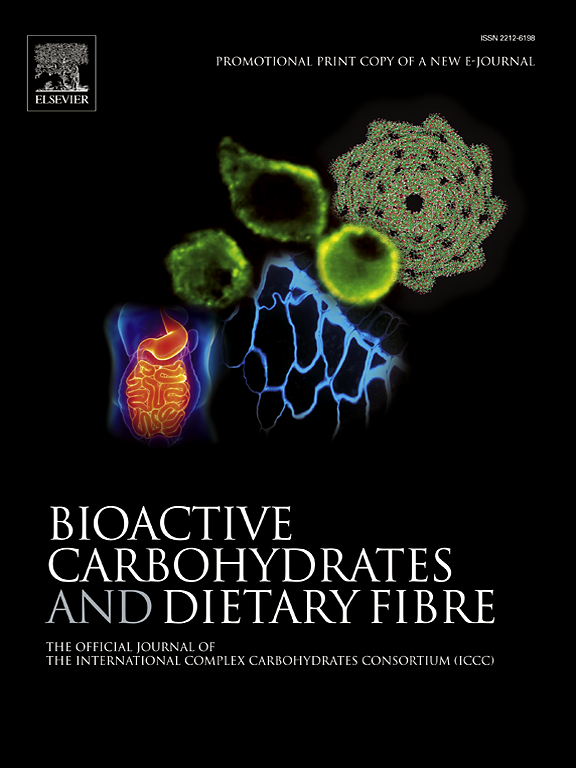印度传统水稻品种的化学特性和抗癌评价:对其治疗潜力的认识
IF 3.6
引用次数: 0
摘要
本研究评估了印度泰米尔纳德邦的三个传统水稻品种:Thuyamalli、Kuruvikar和Kudaivazhai的植物化学、抗氧化和抗癌特性。气相色谱-质谱联用(GC-MS)鉴定出15种活性化合物,其中以9-十八烯酸甲酯的活性强度最高(32.11%)。傅里叶变换红外光谱(FTIR)揭示了所有品种的官能团,如醇和烷烃。DPPH法测定的抗氧化活性显示,古代瓦扎伊水稻的抗氧化活性最高(EC50 = 220 μL),其次是库鲁维卡水稻(EC50 = 192 μL)和图亚马利水稻(EC50 = 170 μL)。分子对接研究表明,水稻衍生化合物与乳腺癌蛋白之间存在很强的相互作用,其中9-十八烯酸甲酯的对接评分为- 11.13 kcal/mol。这些发现强调了这些水稻品种的高酚含量,类黄酮含量和抗氧化活性,支持它们作为抗癌剂的潜力。本研究强调传统大米的治疗和营养价值,提倡保存和饮食包容。本文章由计算机程序翻译,如有差异,请以英文原文为准。

Chemical characterization and anticancer evaluation of Indian traditional rice Cultivars: Insights into their therapeutic potential
This study evaluates the phytochemical, antioxidant, and anticancer properties of three traditional rice varieties from Tamil Nadu, India: Thuyamalli, Kuruvikar, and Kudaivazhai. Gas chromatography-mass spectrometry (GC-MS) identified 15 bioactive compounds, with 9-octadecenoic acid methyl ester showing the highest intensity (32.11 %). Fourier transform infrared (FTIR) spectroscopy revealed functional groups like alcohols and alkanes in all varieties. Antioxidant activity measured through DPPH assay demonstrated Kudaivazhai rice's highest scavenging activity (EC50 = 220 μL), followed by Kuruvikar (EC50 = 192 μL) and Thuyamalli (EC50 = 170 μL). Molecular docking studies indicated strong interactions between rice-derived compounds and breast cancer proteins, with 9-octadecenoic acid methyl ester achieving a docking score of −11.13 kcal/mol. These findings highlight the high phenolic content, flavonoid levels, and antioxidant activity of these rice varieties, supporting their potential as anticancer agents. This study emphasizes the therapeutic and nutritional value of traditional rice, advocating their conservation and dietary inclusion.
求助全文
通过发布文献求助,成功后即可免费获取论文全文。
去求助
来源期刊

Bioactive Carbohydrates and Dietary Fibre
Agricultural and Biological Sciences-Food Science
CiteScore
6.00
自引率
0.00%
发文量
38
期刊介绍:
 求助内容:
求助内容: 应助结果提醒方式:
应助结果提醒方式:


